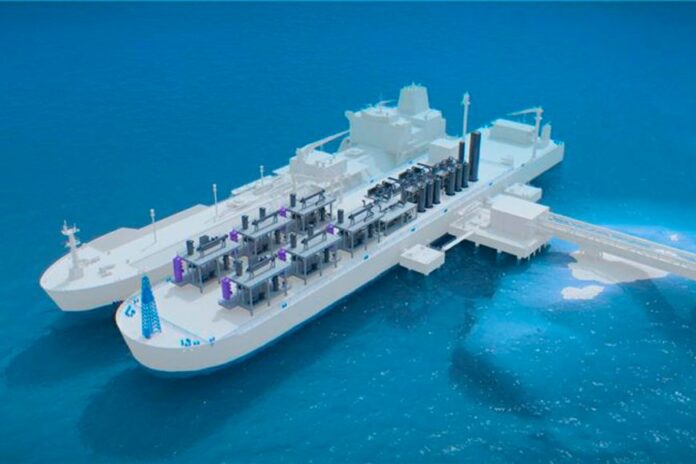Höegh Evi and Wärtsilä Gas Solutions have successfully completed development of the world’s first floating ammonia-to-hydrogen cracker. This breakthrough technology enables floating import terminals to produce hydrogen at industrial-scale volumes from transported ammonia, marking a major step in the energy transition. The project was announced in April 2023 and is part of Norway’s green platform programme.
The industrial-scale ammonia cracker has a modular design that allows integration into both hybrid Floating Storage and Regasification Units (FSRUs) and dedicated Floating Hydrogen Terminals. The technology is highly scalable with a sendout capacity of up to 210,000 tonnes of hydrogen annually. Ammonia storage can range from 10,000m³ to 120,000m³.
“The floating ammonia-to-hydrogen cracker developed by Höegh Evi, Wärtsilä and partners is a game-changer for the hydrogen economy and the energy transition in Europe. Our floating terminals and cracking technology can unlock the full potential of global value chains for green hydrogen, providing European industry with a reliable supply of clean energy within this decade,” said Erik Nyheim, CEO of Höegh Evi.
“This pioneering development of the floating ammonia-to-hydrogen cracker represents a significant leap forward in our quest for sustainable energy solutions. Together with Höegh Evi and our partners, we are not only addressing the challenges of hydrogen storage and transportation but also paving the way for a more resilient and flexible energy infrastructure,” said Walter Reggente, Vice President of Wärtsilä Gas Solutions.
The project has received approximately EUR 5.9 million in funding from the Norwegian Government’s green platform programme, representing approximately 50% of the total budget. The ammonia cracker was constructed at Sustainable Energy’s Norwegian Catapult Center in Stord, Norway. Additional partners in the project include the Institute for Energy Technology (IFE), University of South-East Norway, Sustainable Energy and BASF SE.
“The future of energy must be green, and it’s our job to be part of the technological development necessary to achieve this goal. We are very happy for this project,” said Håkon Haugli, CEO of Innovation Norway.
Innovation Norway is the Norwegian trade promotion organization and is partly responsible for the allocation of funds within the Green Platform program.
According to the EU’s REPower strategy, Europe plans to import 10 million tonnes of renewable hydrogen per year by 2030. As the development of the hydrogen grid progresses, floating infrastructure with ammonia cracking technology can unlock large-scale imports, supplying hard-to-abate industries with a stable baseload energy source and balance within the energy system. To meet this demand, Höegh Evi is developing several hydrogen terminal projects in Europe, with targeted start of operations before 2030.



